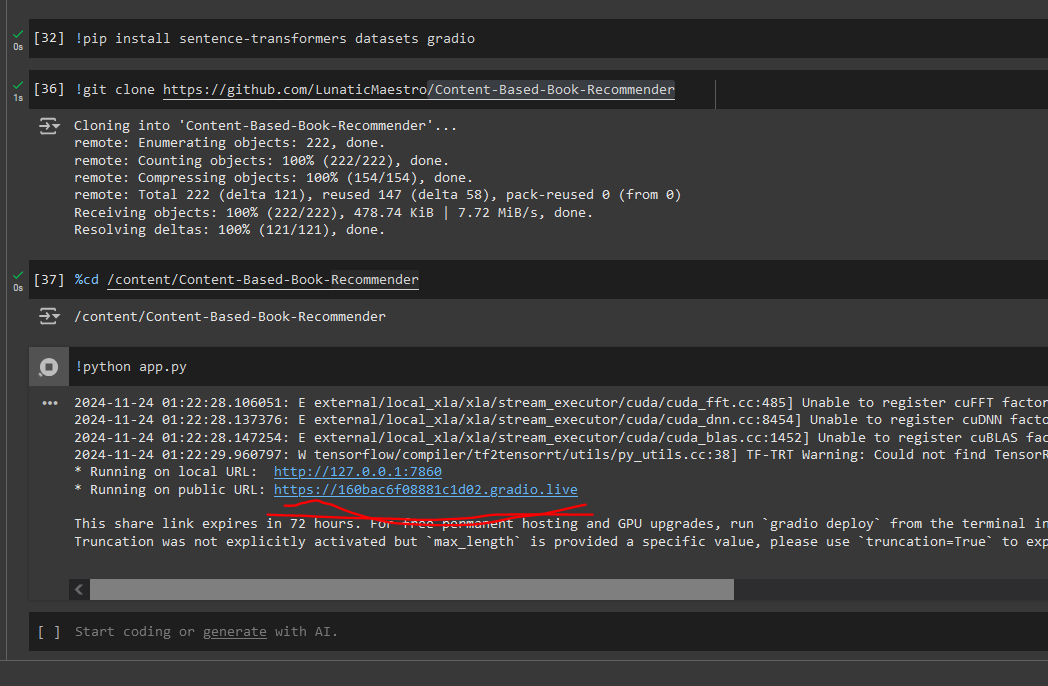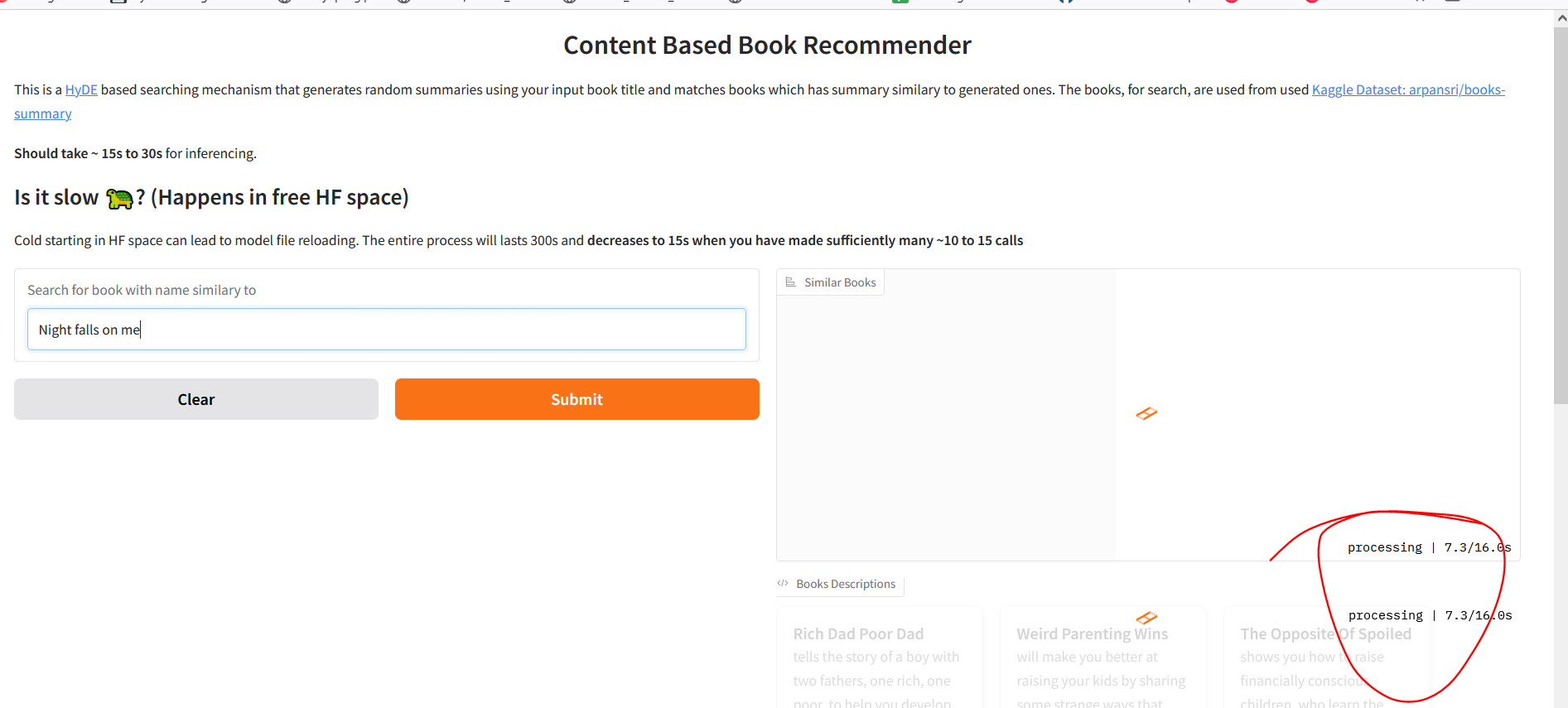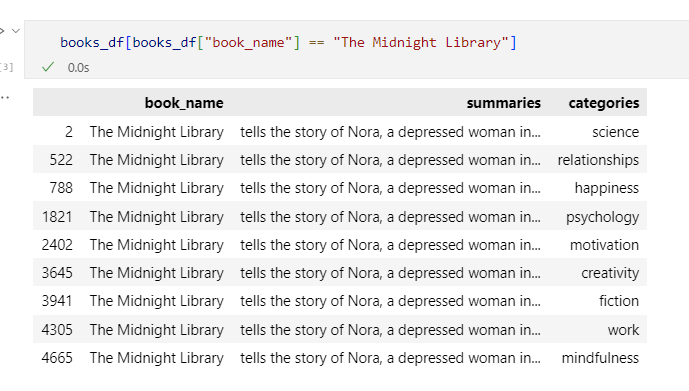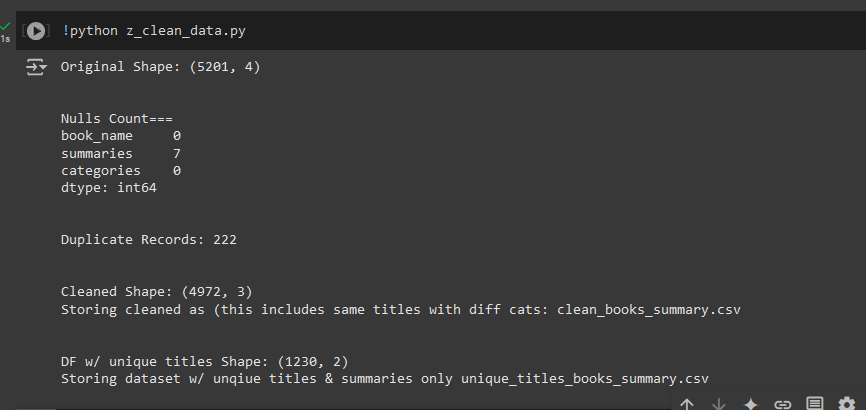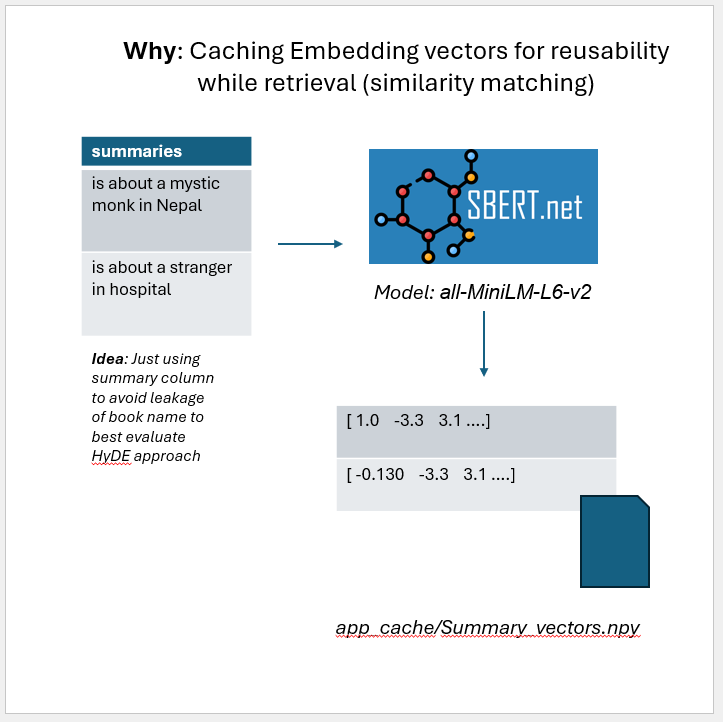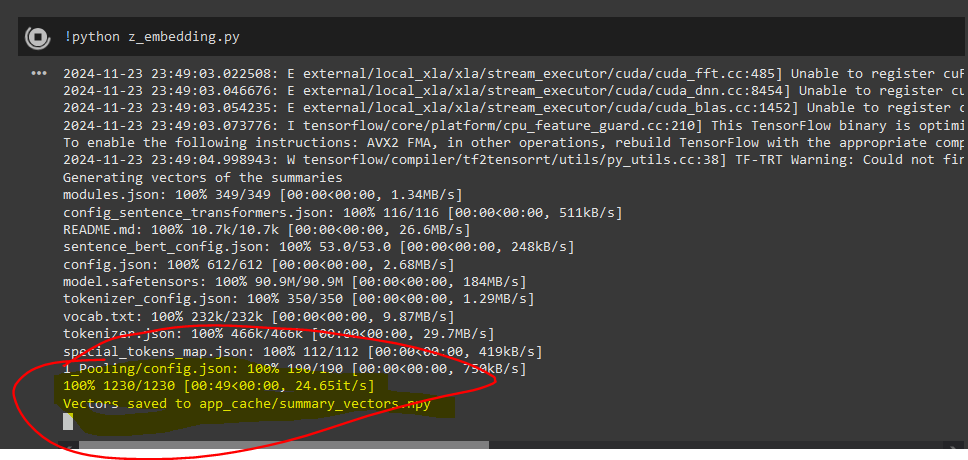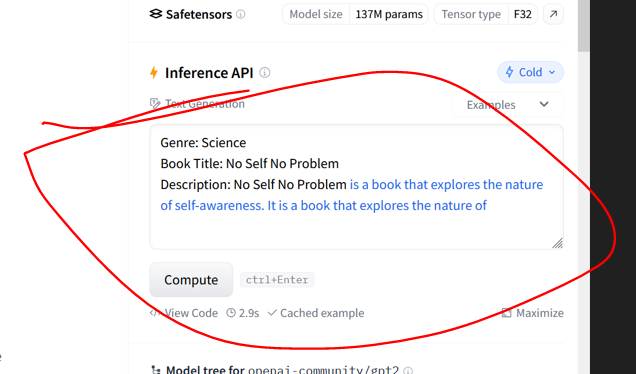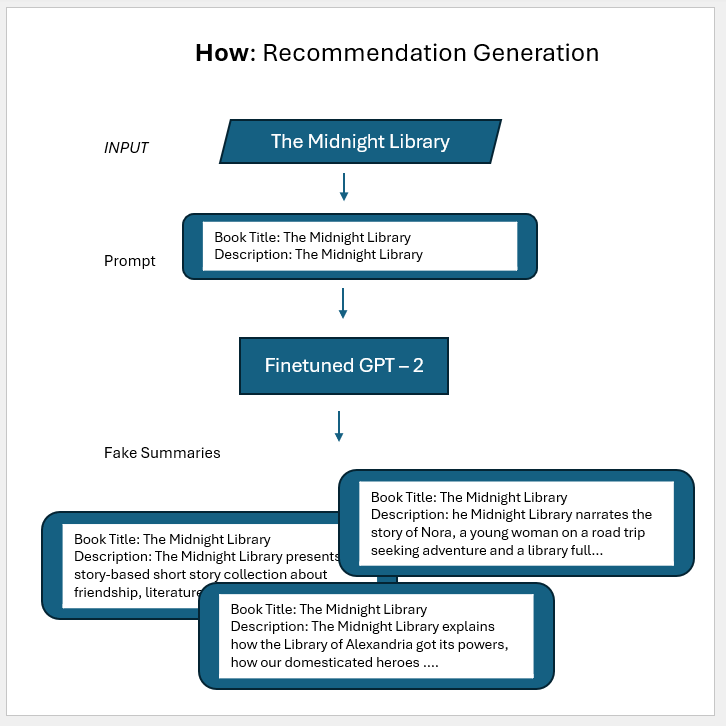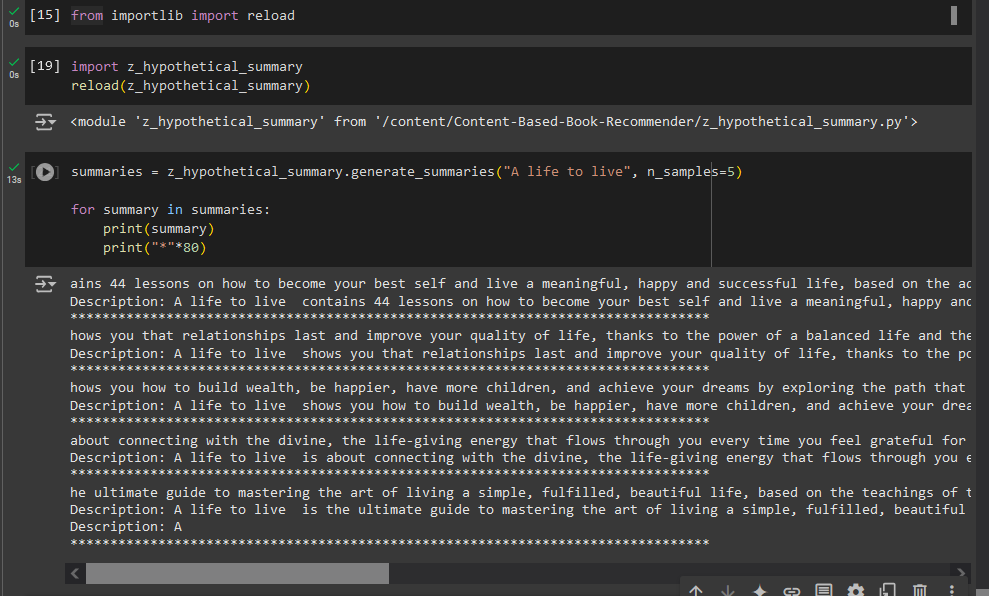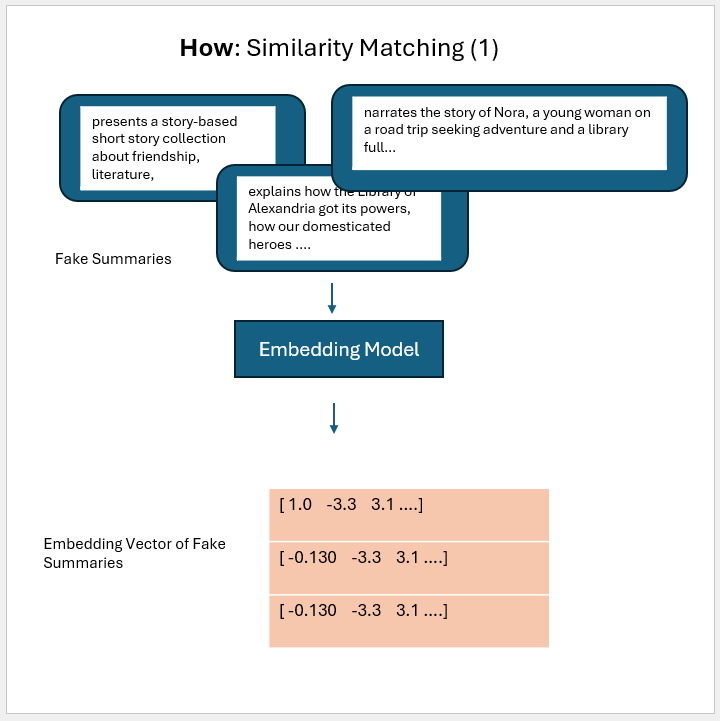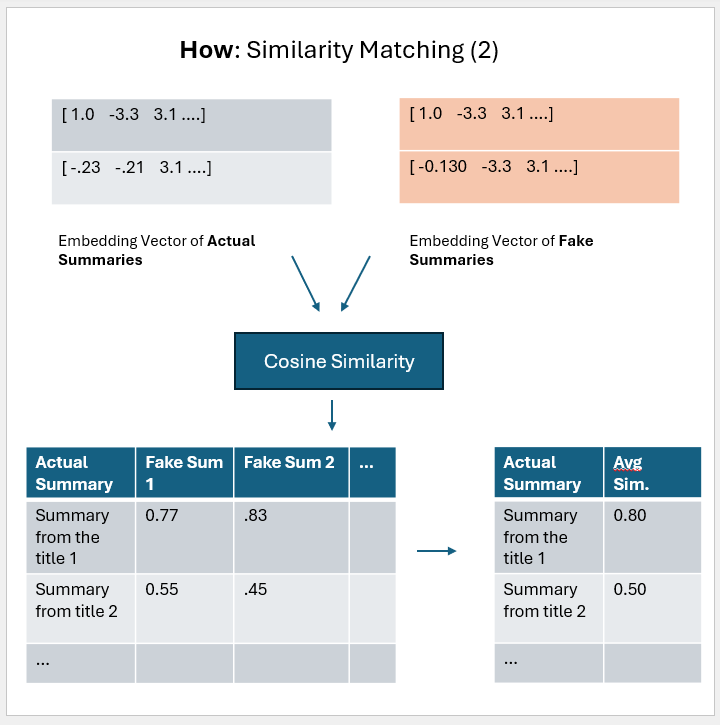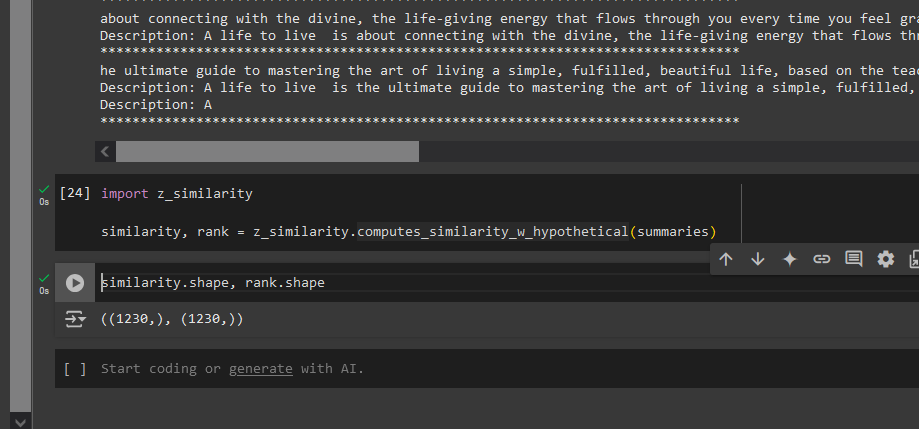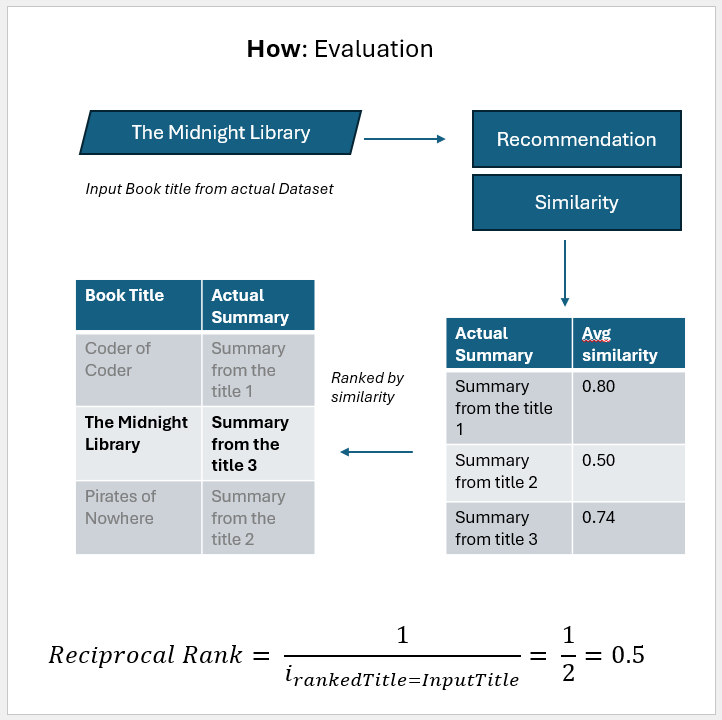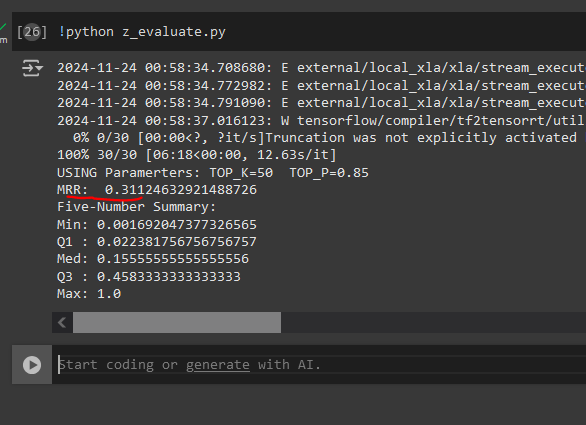Spaces:
Running
A newer version of the Gradio SDK is available:
5.36.2
title: Book Recommender
emoji: ⚡
colorFrom: indigo
colorTo: gray
sdk: gradio
sdk_version: 5.6.0
app_file: app.py
pinned: false
short_description: A content based book recommender.
Content-Based-Book-Recommender
A HyDE based approach for building recommendation engine.
Try it out: https://huggingface.co/spaces/LunaticMaestro/book-recommender
Foreword
All images are my actual work please source powerpoint of them in
.resourcesfolder of this repo.Code is documentation is as per Google's Python Style Guide.
ALL files Paths are at set as CONST in beginning of each script, to make it easier while using the paths while inferencing & evaluation; hence not passing as CLI arguments.
Seed value for code reproducability is set at as CONST as well.
prefix
z_in filenames is just to avoid confusion (to human) of which is prebuilt module and which is custom during import.
Table of Content
Pipeline walkthrough in detail
For each part of pipeline there is separate script which needs to be executed, mentioned in respective section along with output screenshots.
Running Inference
Memory Requirements
The code need <2Gb RAM to use both the following. Just CPU works fine for inferencing.
- https://huggingface.co/openai-community/gpt2 ~500 mb
- https://huggingface.co/sentence-transformers/all-MiniLM-L6-v2 <500 mb
Libraries
requirements.txt is set up such that HF can best not create conflict. I developed the code in google colab with following libraries that required manual installation.
pip install sentence-transformers datasets gradio
Running
Goolge Colab
!pip install sentence-transformers datasets gradio
!git clone https://github.com/LunaticMaestro/Content-Based-Book-Recommender
%cd /content/Content-Based-Book-Recommender
!python app.py
Access the code at public link
Also colab is fast. 🏎️ even with CPU only takes 16s
Sidenotes:
- I rewrote the snippets from
z_evaluate.pytoapp.py, cuz need to handle gradio rendering differently. - DONT set
debug=Truefor gradio in HF space, else it doesn't start. - Free HF space work differently for persisting models (cache files) across local running (tried in colab space) works faster. You will see lot of my commits in HF Space to discover this problem.
Local System
python app.py
access at http://localhost:7860/
Approach
References:
- This is the core idea: https://arxiv.org/abs/2212.10496
- Another work based on same, https://github.com/aws-samples/content-based-item-recommender
- For future, a very complex work https://github.com/HKUDS/LLMRec
Training Steps
Step 1: Data Clean
What is taken care
- unwanted column removal (the first column of index)
- missing values removal (drop rows)
- duplicate rows removal.
What is not taken care
- stopword removal, stemming/lemmatization or special character removal
because approach is to use the casual language modelling (later steps) hence makes no sense to rip apart the word meaning
Observations from z_cleand_data.ipynb
Action: We are not going to remove them rows that shows same titles (& summaries) with different categories but rather create a separate file for unique titles.
RUN:
python z_clean_data.py
Output: clean_books_summary.csv, unique_titles_books_summary.csv
Step 2: Generate vectors of the books summaries.
WHAT & WHY
Here, I am going to use pretrained sentence encoder that will help get the meaning of the sentence. We perform this over unique_titles_books_summary.csv dataset
Caching because the semantic meaning of the summaries (for books to output) are not changed during entire runtime.
RUN:
Use command
python z_embedding.py
Just using CPU should take <1 min
Output: app_cache/summary_vectors.npy
Step 3: Fine-tune GPT-2 to Hallucinate but with some bounds.
What & Why
Hypothetical Document Extraction (HyDE) in nutshell
- The Hypothetical part of HyDE approach is all about generating random summaries,in short hallucinating. This is why the approach will work for new book titles
- The Document Extraction (part of HyDE) is about using these hallucinated summaries to do semantic search on database.
Why to fine-tune GPT-2
We want it to hallucinate but withing boundaries i.e. speak words/ language that we have in books_summaries.csv NOT VERY DIFFERENT OUT OF WORLD LOGIC.
Prompt Tune such that we can get consistent results. (Screenshot from https://huggingface.co/openai-community/gpt2); The screenshot show the model is mildly consistent.
Reference:
- HyDE Approach, Precise Zero-Shot Dense Retrieval without Relevance Labels https://arxiv.org/pdf/2212.10496
- Prompt design and book summary idea I borrowed from https://github.com/pranavpsv/Genre-Based-Story-Generator
- I didnt not use his model
- its lacks most of the categories; (our dataset is different)
- His code base is too much, can edit it but not worth the effort.
- I didnt not use his model
- Fine-tuning code instructions are from https://huggingface.co/docs/transformers/en/tasks/language_modeling
RUN
If you want to
push to HF. You must supply your token from huggingface, required to push model to HF
huggingface-cli loginNot Push to HF, then in
z_finetune_gpt.py:- set line 59
push_to_hubtoFalse - comment line 77
trainer.push_to_hub()
- set line 59
We are going to use dataset clean_books_summary.csv while triggering this training.
python z_finetune_gpt.py
Image below just shows for 2 epochs, but the one push to my HF https://huggingface.co/LunaticMaestro/gpt2-book-summary-generator is trained for 10 epochs that lasts ~30 mins for 10 epochs with T4 GPU reduing loss to 0.87 ~ (perplexity = 2.38)
The loss you see is cross-entryopy loss; as ref in the fine-tuning instructions : Transformers models all have a default task-relevant loss function, so you don’t need to specify one
So all we care is lower the value better is the model trained :)
We are NOT going to test this unit model on some test dataset as the model is already proven (its GPT-2 duh!!). But we are going to evaluate our HyDE approach end-2-end next to ensure sanity of the approach that will inherently prove the goodness of this model.
Parts of Inference
Before discussing evaluation metric let me walk you through two important pieces recommendation generation and similarity matching;
Recommendation Generation
The generation is handled by functions in script z_hypothetical_summary.py. Under the hood following happens
Function Preview I did the minimal post processing to chop of the prompt from the generated summaries before returning the result.
Similarity Matching
Function Preview Because there are 1230 unique titles so we get the averaged similarity vector of same size.
Evaluation Metric & Result
So for given input title we can get rank (by desc order cosine similarity) of the store title. To evaluate we the entire approach we are going to use a modified version Mean Reciprocal Rank (MRR).
Test Plan:
- Take random 30 samples and compute the mean of their reciprocal ranks.
- If we want that our known book titles be in top 5 results then MRR >= 1/5 = 0.2
RUN
python z_evaluate.py
The values of TOP_P and TOP_K (i.e. token sampling for our generator model) are sent as CONST in the z_evaluate.py; The current set of values are borrowed from the work: https://www.kaggle.com/code/tuckerarrants/text-generation-with-huggingface-gpt2#Top-K-and-Top-P-Sampling
MRR = 0.311 implies that there's a good change that the target book will be in rank (1/.311) ~ 3 (third rank) i.e. within top 5 recommendations
TODO: A sampling study can be done to better make this conclusion.

